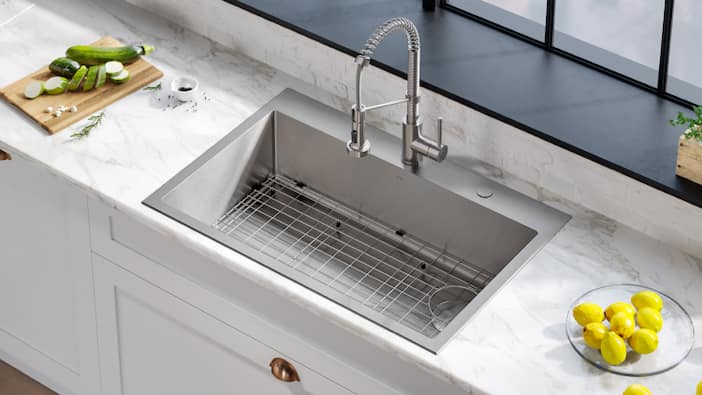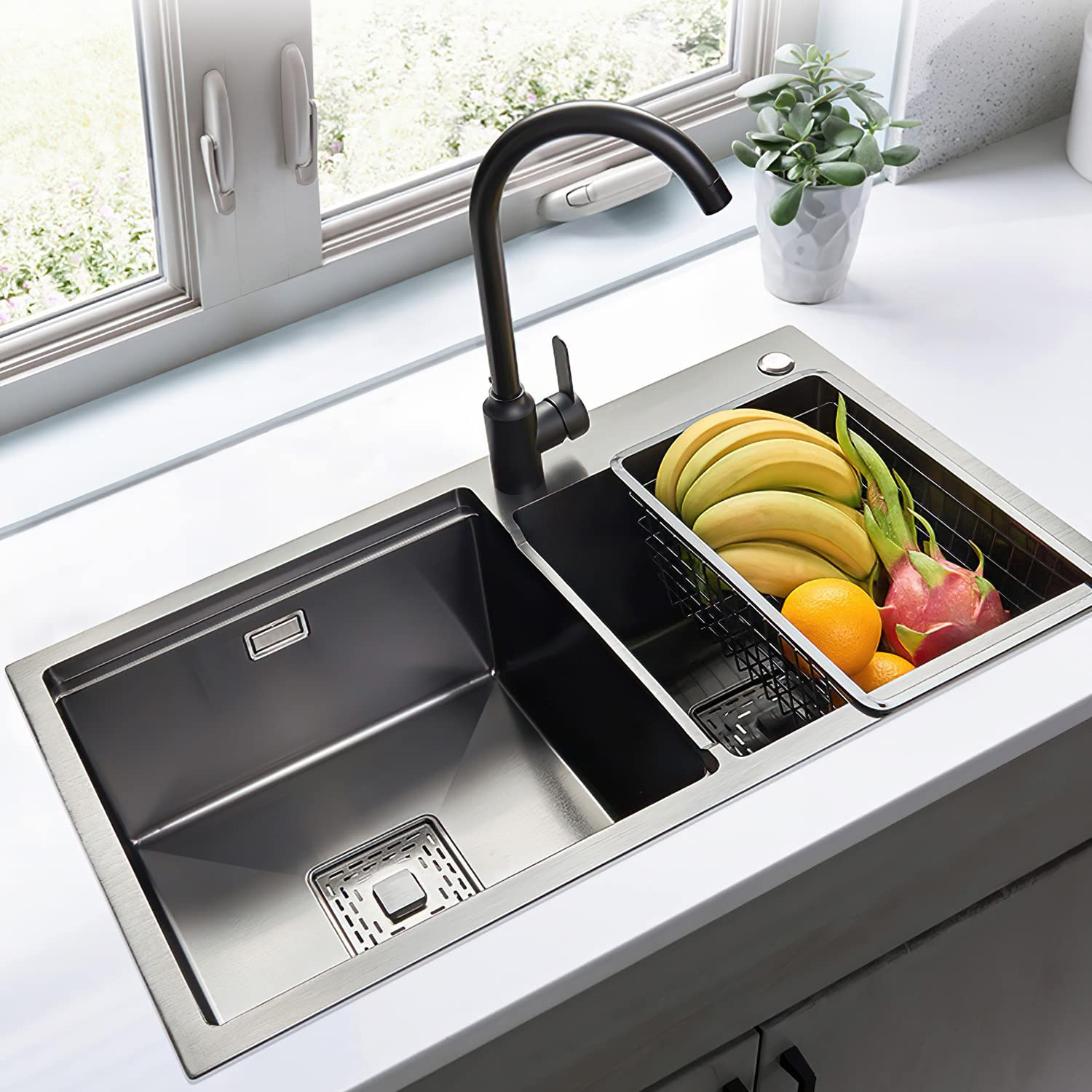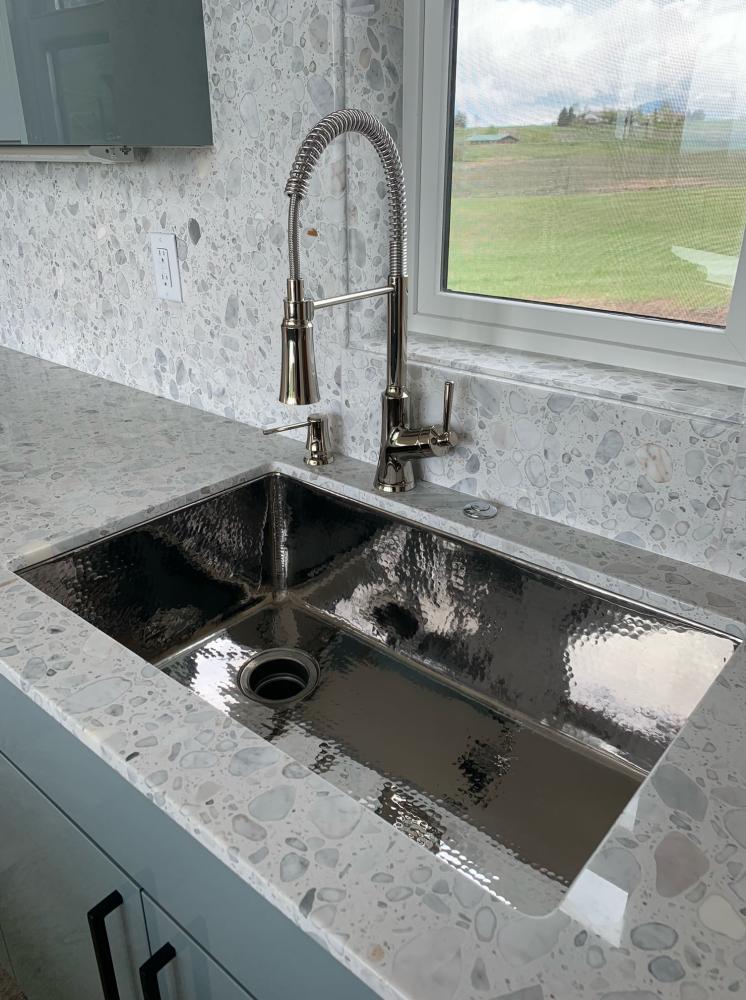Introduction: Importance of a Clean Kitchen Sink
The kitchen sink is one of the most frequently used fixtures in any home, serving as a hub for cooking, cleaning, and food preparation. Over time, it can accumulate dirt, grime, and bacteria, making it essential to maintain cleanliness for both hygiene and aesthetic purposes. In this comprehensive guide, we’ll walk you through a step-by-step process to effectively clean your kitchen sink, leaving it sparkling and sanitized.

Gather Your Supplies: Preparing for the Task Ahead
Before diving into the cleaning process, gather all the necessary supplies to ensure you have everything you need on hand. You’ll likely need dish soap, baking soda, vinegar, a scrub brush or sponge, microfiber cloths, and a toothbrush or small cleaning brush for hard-to-reach areas. Additionally, consider using gloves to protect your hands from harsh chemicals and abrasive cleaners.
Clearing the Sink: Start with a Clean Slate
Begin by removing any dishes, utensils, or debris from the sink to clear the area and provide unobstructed access for cleaning. Dispose of any food scraps or residue in the trash or compost bin, and rinse the sink with hot water to loosen surface dirt and grease. Taking these initial steps will make the cleaning process more efficient and effective.

Basic Cleaning: Washing Away Surface Dirt
Next, apply a small amount of dish soap to a sponge or scrub brush and use it to scrub the surfaces of the sink, including the basin, faucet, and handles. Pay special attention to areas prone to buildup, such as around the drain, crevices, and seams, and use a toothbrush or cleaning brush to reach tight spaces. Rinse the sink thoroughly with hot water to remove soap residue and surface dirt.
Deep Cleaning: Banishing Stains and Odors
For stubborn stains, discoloration, or lingering odors, a deeper cleaning may be necessary. Sprinkle baking soda generously over the surfaces of the sink, focusing on areas with visible stains or buildup. Then, pour vinegar over the baking soda to create a fizzy reaction that helps lift and dissolve dirt and grime. Allow the mixture to sit for several minutes, then scrub the sink again with a sponge or scrub brush before rinsing thoroughly with hot water.

Sanitizing: Killing Germs and Bacteria
To ensure your kitchen sink is thoroughly sanitized, it’s essential to use a disinfectant cleaner or solution that kills germs and bacteria. You can create a homemade disinfectant by mixing equal parts water and white vinegar or by using a commercial disinfectant spray or wipe. Apply the disinfectant to the surfaces of the sink, including the basin, faucet, and handles, and allow it to sit for several minutes before rinsing with hot water.
Polishing: Adding a Final Touch of Shine
Once the sink is clean and sanitized, you can add a final touch of shine by polishing the surfaces with a microfiber cloth. Wipe down the sink basin, faucet, and handles with the cloth to remove any remaining water spots or streaks, leaving behind a gleaming finish. This step not only enhances the appearance of your sink but also helps repel water and prevent future buildup.
Maintenance Tips: Keeping Your Sink Clean and Fresh
To maintain the cleanliness and freshness of your kitchen sink, incorporate regular cleaning and maintenance into your household routine. After each use, rinse the sink with hot water and wipe down the surfaces with a sponge or cloth to remove any food residue or splatters. Additionally, consider scheduling a deep cleaning of your sink on a weekly or biweekly basis to prevent stains, odors, and bacterial growth.

Preventing Clogs: Proactive Measures for a Clear Drain
In addition to cleaning the surfaces of your kitchen sink, it’s important to pay attention to the drain to prevent clogs and keep water flowing smoothly. To keep your drain clear, avoid pouring grease, oils, or food scraps down the sink, as these can solidify and create blockages over time. Consider using a drain strainer or stopper to catch debris before it enters the drain, and periodically flush the drain with hot water or a mixture of baking soda and vinegar to break down buildup and keep pipes clean.
Refreshing the Garbage Disposal: Eliminating Odors and Residue
If your kitchen sink is equipped with a garbage disposal, it’s essential to maintain and clean it regularly to prevent odors and bacterial growth. To freshen up your garbage disposal, grind ice cubes and citrus peels to help remove food residue and eliminate odors. You can also pour a mixture of baking soda and vinegar down the disposal followed by hot water to clean and sanitize the blades and interior surfaces. Regular maintenance of your garbage disposal will ensure it remains odor-free and efficient.
Enhancing Drainage: Checking and Adjusting Sink Stopper Mechanisms
Over time, sink stoppers and drain mechanisms can become worn or misaligned, leading to poor drainage and potential leaks. Periodically check the condition of your sink stopper and drain components to ensure they are functioning correctly and sealing tightly. If you notice any signs of damage or deterioration, such as corrosion or leaking, consider replacing the stopper or contacting a plumber for repairs. Properly functioning drain mechanisms will help maintain optimal water flow and prevent water damage to your sink and surrounding areas.
Addressing Hard Water Deposits: Removing Mineral Buildup
If you live in an area with hard water, mineral deposits can accumulate on the surfaces of your kitchen sink, leaving behind unsightly stains and residue. To remove hard water deposits, create a paste using equal parts water and distilled white vinegar or lemon juice and baking soda. Apply the paste to the affected areas of the sink and let it sit for several minutes before scrubbing with a soft brush or sponge. Rinse the sink thoroughly with hot water to reveal a clean and lustrous surface free of mineral buildup.

Conclusion: A Clean and Inviting Kitchen Sink
In conclusion, maintaining a clean and hygienic kitchen sink is essential for a healthy and inviting home environment. By following these step-by-step instructions and incorporating regular cleaning and maintenance into your routine, you can keep your sink sparkling and sanitized, ensuring a safe and enjoyable space for cooking, cleaning, and food preparation. With a little effort and attention to detail, your kitchen sink can shine bright and serve as a focal point of cleanliness and freshness in your home.


